Main section
Tabs Navigation
Tabs
Getting started
Why is understanding audiences important?
Developing audiences is vital to maintaining and growing your service. Without a source of new users your existing audience cannot be sustained. You may also wish to diversify the people who engage with you to broaden your appeal and potentially grow your user base. To do this effectively you need to improve your understanding of your audience:
- who are they?
- what are their motivations for using the service?
- how often do they engage with you – and in what form?
- what would encourage them to engage more deeply?
- what stops them from doing this now?
If you can gather these insights and respond to them through the delivery and development of your service, you will be able to operate more effectively.
Understanding your audiences equips you with evidence to make better business decisions and be more sustainable long-term.
By building an understanding of your audience you are also able to be more focused and targeted with your resources.
A target audience of ‘the general public’ or ‘all local people’ is not achievable (or realistic) – where do you start, and how do you allocate your time and budgets to find this group? Setting unrealistic targets is often a reason for services not succeeding in developing new audiences.
By building your understanding you will be able to be more focused and nuanced in your work, and more successful.
What do we mean by understanding audiences?
Gaining an understanding of your audience will help you to know:
- what will encourage them to engage with your service
- what might stop them from engaging
- which elements or programmes of your service they might use
- what might encourage them to engage more deeply, be more regular users, advocates and supporters
All of these factors will help you to make decisions about your future service.
Gaining this understanding takes time and is an ongoing process. It means embedding these ideas in your work long-term.
Central to this is asking questions, gathering answers, listening carefully, identifying what’s useful to you to form insights and then acting upon these in your service provision and planning.
Critical success factors
Before embarking on a journey to better understanding your audiences there are a number of factors that will be critical to your success.
Clarity about timescale
Developing audiences and your understanding of them takes time. It’s an on-going process, not a one-off task.
Relationship-building
This work is all about building relationships with groups, individuals, partners. This takes time and it needs to be long-term – consider how you are going to retain current audiences when fostering relationships with new ones.
Taking an organisation-wide approach
This shouldn’t be a task or programme that is confined to one staff member. You might identify a lead person, but the insights you gain from this work will have implications for the whole organisation so everyone needs to be on board.
Be proportionate and realistic
Every organisation can better understand their audiences and develop new ones, but it’s important to be realistic about what you can achieve or you can become frustrated. Start small, test things out, find what works for you and then build on this. Don’t be over-ambitious – be proportionate to your resource.
Planning
To be successful it’s crucial to have a plan. This is going to help you with all the points above – you can consider your timescale, involve others and make sure you’re being realistic about what you can achieve.
A plan doesn’t have to be a huge wordy document. It needs to have the key elements in there – what, who, when, costs – and it needs to show the process you’re going to deliver.
An outline of the process you might follow to understand your audiences is shown here:
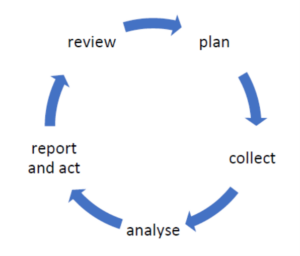
Your starting point is the plan where you will identify your audiences and outline your consultation plan. Then you will move to collecting your data, analysing it, reporting and acting upon it. It is important to then review the programme so you can make improvements in your next cycle of planning – and then the process is repeated.
Who are my audiences?
This is the obvious question to start with. What do you know about the people who already use your service? ‘Gut instincts’ can be useful here, but evidence is key. It is important to consider what data you collect about them. Some examples of what you might already know about your audience are shown below:
Numerical data
The number of people through the door, making enquiries, using your website, engaging with you on social media, booking events, coming in groups.
Demographics
Do you split your numerical data down further to help you get more detail of who your users are, for example:
- what age are most of your users
- what proportion are White British?
- How many class themselves as having a disability?
Location
Do you know where they are based, what proportion are local (you need to decide what ‘local’ means to you)?
Usage data
Do you collect data that supports you to understand what services people use and how regularly they use them? Are you able to say what proportion of your users are first-time users, or are users of your reading room, or represent school visits?
Motivations
You might have asked users about their reasons for engaging with you and be able to list these different motivations or know the proportions they represent among your total audience (e.g. 30% are using the service for family history research, 10% for school studies, 15% for business purposes etc.).
The data you already have may back up any assumptions you already had you may be surprised. Considering the split of your audience can be illuminating – perhaps your school visits make up a higher or lower proportion of your total than you expected, or the home base of your users may challenge your expectations.
Many of you will be confronted with gaps in this information. Your first action in this process could be to change that and to review your existing data collection process to enable you to make more informed decisions. Decide on the data you feel would be most useful to you and which is feasible to collect from most users. Postcodes can give you a lot of data in return for a small request from your users so would be a good starting point. Your data should support you to measure your progress in your audience development plans – so if you decide you want to address the age profile of your users you need to collect this data.
Regular snapshot surveys of users are better than no data at all – but make them regular (monthly would be good to overcome any seasonal differences) and on different times of day and days of the week to give you a representative sample. Be proportionate in this – if you are a small team you can’t achieve the same as a large organisation who may decide to commission external support for this task. Talk to other organisations about how they gather user data, do your research, test things out, review and try again.
Who isn’t using your service?
By gathering as much information as you can about your current users you can build a picture of who they are as well as starting to identify who is not using your service.
You could compare your user data to the population of your area or catchment to see how the demographics compare. How representative of your catchment (or potential user base) is your existing audience? Most archives tend towards an older, white, well-educated user base. You might want to consider developing new audiences from beyond this traditional base.
Consulting with audiences
How do I identify and prioritise new audiences to work with?
A common issue for organisations is that, while wanting to diversify your audience and users, there is a lack of confidence in where to start which can sometimes halt any progress.
Also remember that we are considering potential – not everyone is going to be interested in archives. Around 3-5% of the UK population say they visit archives (according to the Department for Digital, Culture Media and Sport (DCMS) ‘Taking Part’ survey) and while as a sector we can aim to increase this, we’re not going to reach 100% of the population, so trying to engage with everyone is not going to be effective. You need a more focused approach to build meaningful relationships with people who haven’t engaged with your service before.
Once you have identified who is under-represented in your current user as a first action, a few points to help you prioritise further might be:
- are there potential themes in your collection content that might have a resonance with a particular group?
- what are the strategic priorities of your organisation or of your main stakeholder? Are there key issues you want to address, e.g. education, employment and skills, health and wellbeing, inequality?
- is there a gap in the market you could fill in your area, e.g. is there little provision for home schoolers or for refugee families?
- who are your partners, what are their priorities and plans over the coming years, could you work together to target a common audience?
- are there any easy (or more likely – easier) wins? Maybe this could be on your doorstep: your neighbours, or a partnership that can be re-invigorated?
- what opportunities or developments are on the horizon – is there a new plan for your area or a new funding stream or collaboration you could participate in?
- do you have specialisms within your team you could build on?

Figure 1 – prioritising new audiences
Absolutely vital in this mix is to consider your own resources – people, collections, building and spaces within it and your financial resource. Think about the resource required to engage with different groups, the likely outcomes and impacts you could achieve, and where you might best focus your efforts.
If you’re uncertain about prioritising new audiences, consider doing a short options analysis. Decide on your criteria and analyse the pros and cons of each of your new audiences against these criteria. What audience comes out top?
Build yourself a rationale for the audiences you want to engage with by considering each of these points and prioritising your longlist into a short one.
It’s important not to be overambitious and to be proportionate in your plans at this point. Developing new audiences takes time and effort to develop meaningful relationships that will build and be sustainable over years to come. It’s better to work with real impact with one or two new audience groups than to spread yourselves too thin.
Consultation methods
There are many methods you can use to consult with people. The most often used, almost as a default, is a questionnaire/survey or a comments/feedback form. While these certainly have their place, do consider different methods and choose the best one for your situation and needs.
It can be valuable to mix together more than one method, particularly to build a strong evidence case for change. It’s useful to combine quantitative data (i.e. numbers) with qualitative data (i.e. non-numerical information) to give a sense of scale combined with in-depth observation.
Below are a few consultation methods you could consider using. Some of these may be familiar to you and you may have already used some.
Surveys
These can be done in person with your team asking the questions or remotely by the respondent (e.g. online). Questions often have a list of possible responses to choose from plus some open response options.
Vox pops
Opinion-gathering on a topic using a semi-structured interview and small set list of questions. Often seen on television news reports along the lines of ‘what do you think about xxxx issue?’
Feedback walls
A highly visible way to gather feedback with a set of posed questions that visitors are encouraged to answer anonymously.
Focus groups
A moderated small group discussion with a set of people with shared experiences or demographics to explore a set topic. Can be done in person or online.
1:1 depth interviews
An interviewer speaking directly to one person to explore a topic in depth – can be done in person or remotely.
Observational research
The process of watching and recording user/audience behaviour and interactions in your venue. Often used to understand use of space, dwell time, and engagement in different areas.
Advisory panels
Regular meetings with a group of people who are recruited to advise a service with an agreed objective over a set period of time. For example, a teacher advisory panel to support the development of a schools programme.
Journey mapping
A process which takes users through the actions they take when deciding to engage with and then visit your service. It involves visualising the journey into a timeline and identifying significant points along that line (often highs and lows) that can then be acted upon to improve the user experience.
Voting mechanisms
A tool devised to count user preferences and opinions. Can be low tech, for example marbles in a jar, ticks against a written list, or you can use technology such as ‘Mentimeter’ to enable remote access. This method can be used to gather a high volume of feedback for different options or ideas that are easy to explain, e.g. which of these exhibition ideas appeal to you most.
Creative feedback
Using methods to gather opinion and responses beyond the usual methods above. For example, asking visitors to draw a picture of their ideal archive space.
Postcode analysis
Collect postcodes to map the locations of your users, noting hot and cold spots. There are a number of models that analyse data from many different sources and then segment UK postcodes by common characteristics to provide an understanding of the different groups of people who make up your customer base and catchment area. This means you can collect customer postcodes and analyse them against different models to build up a profile of your users.
Mix it up
Not everyone likes to give written responses to questions, so surveys don’t work for everyone. Try out a focus group or an in-depth interview to gather verbal responses to your questions. Or encourage creative responses – how about asking someone to use collage to create a visual picture of their ideal events programme? Or to vote for the activities they’d most like to do by placing a marble in a jar, or a sticky dot on a flip chart list? Many of these methods can be low tech and low cost.
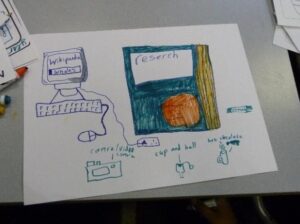
Figure 2 – creative feedback
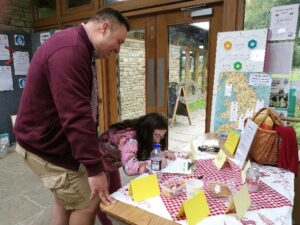
Figure 3 – mixing methods – creative ideas, voting, plus survey
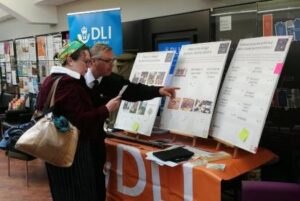
Figure 4 – voting for preferences at an external venue

Figure 5 – at a sports event to capture feedback on exhibition content
Whichever methods you use, make sure you record your findings. If you’re using a survey this might be built in to the software, but if not you need to have someone to take notes, do an audio recording, take photos and write up feedback.
Asking the right questions
The right questions are ones that:
- Provide insights into understanding your audience’s behaviours, motivations, attitudes, preferences and actions
- Will help you make decisions
Before you jump into writing a very long set of questions to use in a survey or an interview, stop and think back to your initial planning. What is the ‘big question’ you want to answer? It might be ‘how do we attract new people to visit us?’ or ‘why do we get no bookings from secondary schools?’
If this is your headline research topic, now break it down into sub-headings or research questions that will help you to answer this, e.g. ‘what stops people from visiting, have they heard of us, which parts of our service might they be interested in, how often might they visit, how can we get them to return after the first time?’
Some tips when writing questions for consultation and research:
- Plan a survey, interview or focus group as a flowing conversation. Start with easy factual questions that give context about your respondents (e.g. have they ever used an archive, which ones, what for) and then move onto deeper discussion.
- Where relevant, gather some contextual information about your respondents to help you interpret their answers, e.g. ask teachers what type of school and what subject(s) they teach, or ask for postcodes in surveys to understand if respondents are local or not.
- Use a mix of open and closed questions
- Try and give options to questions but make sure you leave space for other ideas with an ‘other’ option
- Try out using stimulus material in the same sort of way – show collection items, photos, stories to your group to give them a flavour of what you can offer before you ask them for ideas
- Mind your language – don’t use any acronyms or jargon and avoid terms that are sector-specific. To be sure, always test out questions on someone who doesn’t work in the sector as a sense-check.
- Test out online surveys to make sure the question and responses work properly, for example do you want multiple answers or just one to some questions.
If you have a comments book in your venue, what question(s) are you asking in there? Do you analyse the information given to you? Is it useful? Consider reviewing this, and think about changing the format so you’re able to change the questions to be more useful over time. For example, instead of asking ‘how was your visit’, how about asking ‘how could we improve your visit’ so the responses you receive are ones you could act upon.
The image below shows a large blackboard painted on to a wall to gather visitor feedback instead of a comments book. It was low cost, can be easily updated and changed, and is very visual to encourage take-up. It asks for people to consider their visit in terms of ‘the best thing’, the ‘worst thing’, and ‘what would improve it’. Staff regularly note down the responses, cluster them under common headings and report and discuss at team meetings.
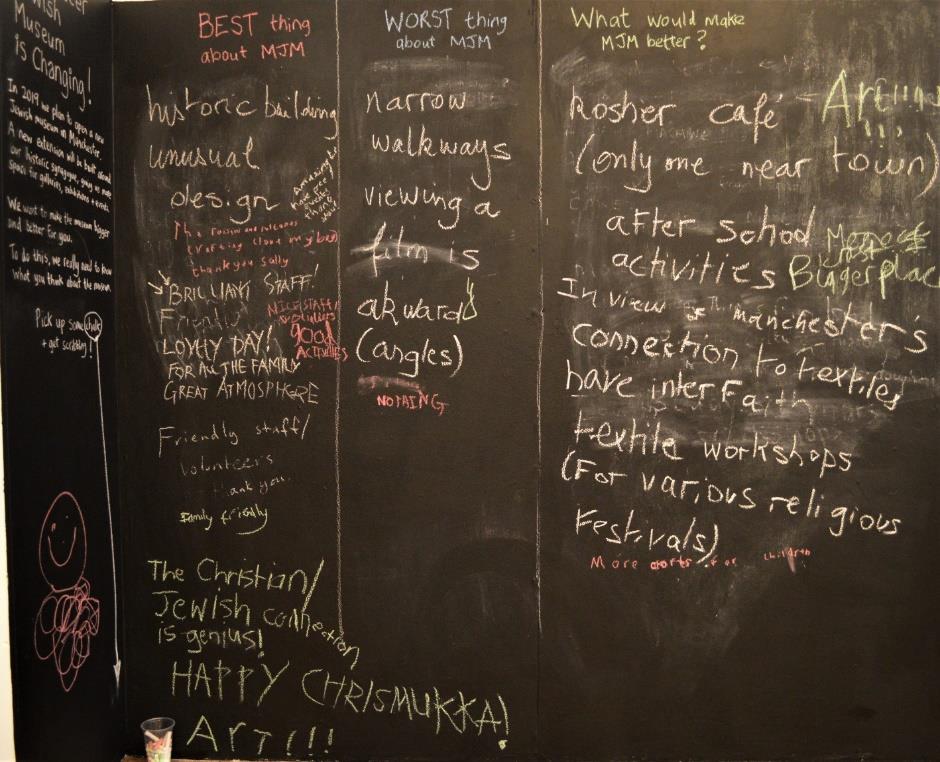
Figure 6 – blackboard wall asking for ‘best/worst/improvements’ responses from visitors
Asking users if they are there for the first time can be really useful to know. If you have a low proportion of first-time users, you’re dealing with a fairly static user base and it should flag up the need to diversify for business reasons – we all need a source of new customers over time. Equally, a high number of first-time visitors can signal a service that attracts a lot of visitors passing through, often tourists, who may not return in person but who might be engaged online in the future. Or it might signify a retention problem.
Being consistent over time in the questions you ask is important if you want to add volume to your responses and/or compare trends over time. For instance, asking about future plans at a number of events over a period can help build up response numbers so you feel more confident about the results.
Recruitment
Recruiting people to take part in consultation can be hard work. Many people tell me they have tried surveys and had poor response rates or advertised a focus group and had no-one turn up. It takes some time and planning to do this well, as well as considering a few key points:
What’s in it for the participants?
You’re asking people to give up some time to help you with your work so make sure your starting point is thinking about how to incentivise them to do this. It might be food and drink or a shopping voucher, or the chance to enter a prize draw for an appealing prize. For people who are already interested in your service, it could be the chance for a guided tour of the stores, to see some items up close, or to attend a social event after hours.
Make it easy for them
The effort should be with you, not with your participants. If you want to speak to people who don’t attend your venue, go out and talk to them in the venues or areas they do attend (with the permission of the venue of course!). You could:
- Go to a family play centre if you want to speak to young families
- A youth group to talk to teenagers
- A community centre or library to get a broad mix of people in a particular location
- A local museum or heritage site to find other people interested in history
- Take a stall at a local community event with something interesting to entice people before you ask them for feedback
Consider timing
Again, think about a time to suit your participants if you’re planning an event like a group discussion. Don’t time it during working hours or across mealtimes. Teachers are most likely to attend something at the end of the school day before going home.
Plan ahead and make use of opportunities to recruit
If you’re meeting and networking, ask your contacts if they can help recruit to your consultation. If you organise any 1:1 in-depth interviews, do these first and ask the contact if they have a user group you could recruit to a focus group or circulate a survey to. You can also use a survey to add in a question to recruit people for other research, for example to a focus group.
Use your networks to promote your consultation
If you’re promoting a questionnaire to people who don’t visit your service, contact groups who work with the people you want to target and ask them to share a link with their users. Think about asking local history groups, family/parent networks, use social media (Facebook is full of local groups covering every possible interest area), youth leaders, teacher networks, and other heritage or cultural organisations who might share the link with their database in a newsletter. Make sure you include a deadline for completion if you’re sending out a survey, as it gives a sense of urgency, and ask people to share it with others too.
Make sure you thank people for their time and input and – if possible – let them know of any outcomes from the consultation, for instance that their ideas formed part of your plans for a funding bid, or for next year’s events programme. Build the relationship with them, invite them to an event, see if they want to go on your mailing list, and develop that positive connection so it might bear fruit in the future.
Exercise – mini consultation plan
By now you should be ready to put together a mini consultation plan. Take some time now and jot some notes down against the prompts below.
Who do you want to consult with?
Consider:
- Are they existing users or new ones?
- Shortlisting to focus on one or two audience groups (see figure one above)
What are your research questions?
Consider:
- Your over-arching research question
- The useful questions to help you develop your action plan
What methods are you going to use?
Consider:
- Mixing up quant and qualitative methods to give you both volume and depth of data
- Your timeframe and resource to deliver this
How will you recruit participants?
Consider:
- Where can you source participants, who can help with this, what networks do you know?
- How will you incentivise participation?
- Time and place
With your mini plan on paper, you’re going to need to think about what you do next with all of that data.
Evaluating your work
Analyse, report and respond
This is the most important step – data is useless unless it’s acted upon. There are so many examples of surveys and feedback that is gathered regularly but then goes unused. The purpose of understanding your audiences is to be able to make better decisions, use your resources more effectively, be more focused in your work, so it is key to put all of your effort and participants’ time to good use.
The data you’ve gathered might be a little overwhelming in its raw state. This is where asking the right questions becomes so valuable in relating responses back to your research questions. Organise the data responses you have against the research questions you posed in your plan. The data should provide evidence under each of these.
One method that can be useful in analysing data is to focus on what stops people from using your service (‘barriers’) and what encourages them to do so (‘drivers’). If you have a lot of open responses from discussions, identify key points under these headings, clustering similar points together to form headlines. You can then consider how you might respond to each of these headline points. An example of this is shown below.
Barrier: A lack of awareness of the service
Response: Review marketing
Barrier: Opening times too restrictive
Response: Consider evening or weekend opening
Driver: Ability to browse collections
Response: Collection topics and catalogue available online
Driver: More relevance to young lives today
Response: Work with young advisory group to develop programmes
Most people prefer to write up a report or presentation of findings. Use a format that works for your organisation and your audience. You can use graphs and visuals if appropriate, anything that makes it easy to read. Do make sure you give clear context for the research so anyone reading the report can grasp its relevance and scope. Be clear about the methods used, include timeframes and a short profile of who the participants were. For example:
“This research was carried out across Spring 2023 with a group of teachers in xx area who had never used our service before. An online survey was followed up by a focus group with secondary school history teachers.”
Having presented your findings against your research questions, you may want to identify options or recommendations for actions. You could also identify any follow-up actions needed. Make sure you get approval and decisions on these actions from your appropriate authority – be it line manager, Board, Committee. Do emphasise that these actions are based on evidence from your potential users and that this has been part of a process that you will now review and then return to as you continue to develop your plans.
Evaluation and sustainability
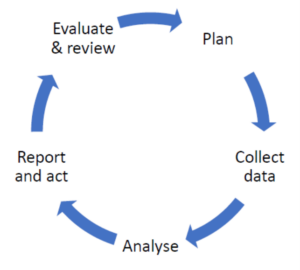 This is the final stage of the cycle, as you review the process you’ve been through and evaluate how it’s worked.
This is the final stage of the cycle, as you review the process you’ve been through and evaluate how it’s worked.
Think about what’s worked well and, comparatively, less well.
Consider:
- The research questions
- The methods/tools you used
- The recruitment and contacts you made
- The analysis and reporting
- The resources you used – time, budget, places, etc.
- Ask yourself what you’d do differently next time
Even just spending half an hour with a flip chart with those questions on and jotting down quick responses on post-its under each heading can be really useful. Make a note of your responses and use this for future planning. Maybe you could share that thinking with your colleagues so you share out the learning from this process.
In sharing the value of this process with your colleagues, it should prompt you to consider how to do this on a regular basis so that it becomes embedded in your organisation’s culture. You might decide to have a standing item on a Management team or Board agenda to review data and reflect on responding to patterns and trends over time. This might mean improving the data you regularly collect to make it more useful to decision-making. It could be that you decide to include regular audience consultation in job descriptions or identify training to share the skills needed across the team.
Further resources
Best practice and advice
Visitor Studies Group – a membership organisation that brings together those interested in visitor studies from a breadth of sectors with advice, support and training events
Citizens Advice have a useful guide to running focus groups (PDF, 0.7MB)
The Market Research Society have a best practice guide on research with vulnerable groups (PDF, 0.3MB)
Archive Service Accreditation defines current good practice and agreed standards and can be used as a tool to develop access to services to meet the standard.
Our Talking to your community section contains resources on community engagement, developing formal and informal learning experiences, and we also have advice on why volunteers are so important to archive services.
We also have case studies on the subject of audience development available to read.
Secondary data sources
National census data is available to view, or look at your Local Authority’s website to find your local Census profile data
The Department of Culture, Media and Sport’s national survey, ‘Taking Part’
Public Health data for England
Public Health data for Northern Ireland
Public Health data for Scotland
Tools
Office for National Statistics’ area profile tool
Postcode analysis using socio-demographics and deprivation levels
Online surveys using Googleforms, Surveymonkey, Snap surveys, or voting tools such as Mentimeter.